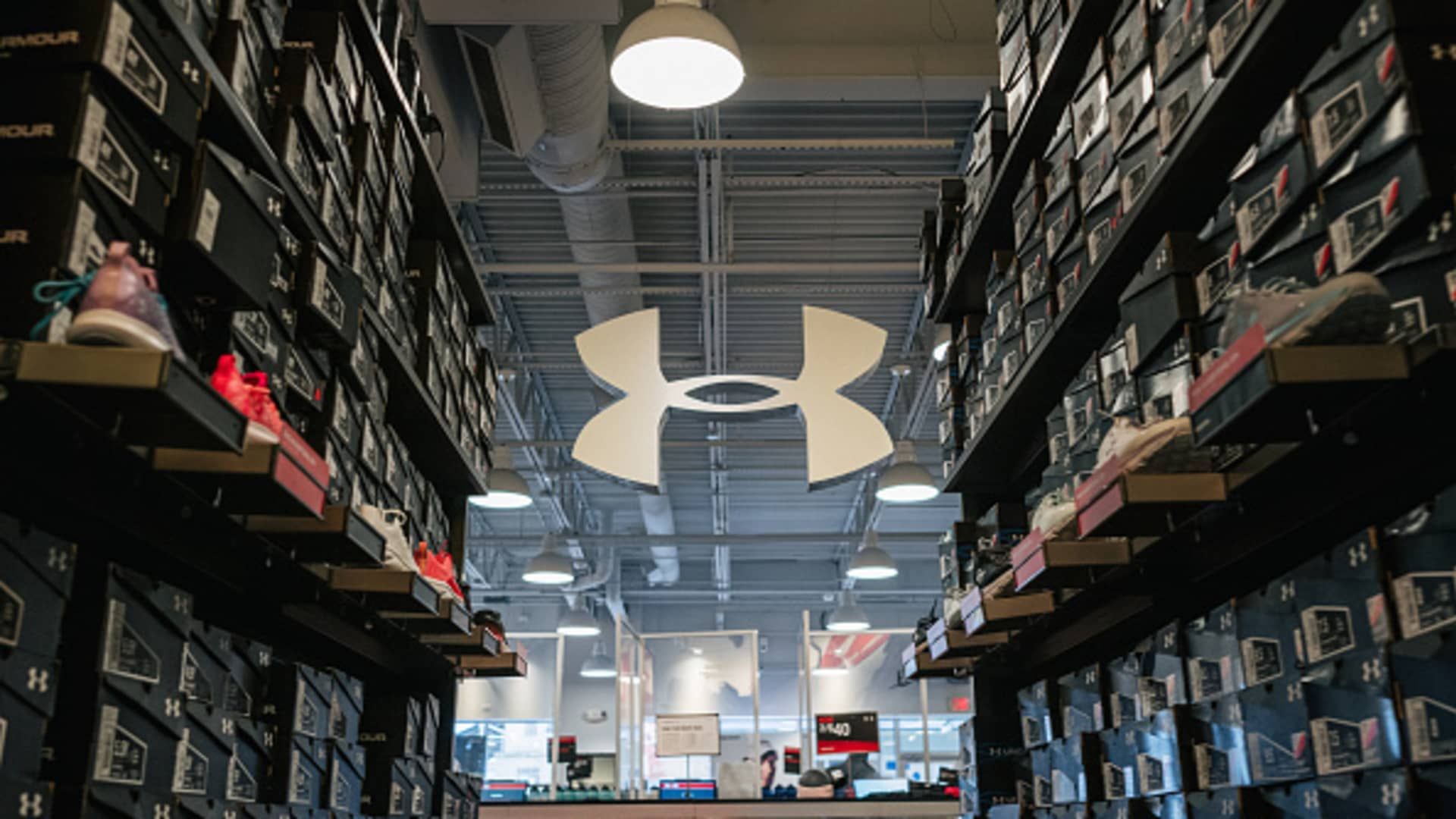The interior of an Under Armor store is seen on November 3, 2021 in Houston, Texas.
Brandon Bell | fake images
Wall Street doesn't like that under the armor Founder Kevin Plank returns as its CEO.
Shares of the sportswear company plunged about 12% on Thursday after the retailer announced late Wednesday that CEO Stephanie Linnartz would step down after just a year on the job and that Plank would replace her on 1 of April.
Following the announcement, both Williams Trading and Evercore ISI downgraded Under Armor and reduced their price targets. Williams Trading rated it a hold from buy and lowered its price target from $11 to $8, while Evercore downgraded the company to underperform from inline and lowered its price target from $8 to $7.
Linnartz, former Marriott International The executive who took over last February is the second CEO that the company has replaced in less than two years.
Former Aldo Group CEO Patrik Frisk replaced Plank as CEO of Under Armor in January 2020, only to suddenly announce plans to step down just over two years later in May 2022.
That December, Under Armor announced plans to hire Linnartz with the bet that his experience creating Marriott's renowned Bonvoy loyalty program and driving digital revenue for the hotel giant would make up for his lack of experience in the retail industry. .
Since starting at Under Armour, Linnartz had focused on reshaping the company's top management, developing its loyalty program, UA Rewards, and pivoting the brand's assortment toward a more athletic-focused offering that had more stylish options for women.
In its downgrade, Evercore ISI said Plank's return to the company was a “clear sign” that the strategy was not working and that its key performance indicators continued to deteriorate in the current quarter.
“We believe Mr. Plank's most likely scenario will include efforts to accelerate a return to revenue growth in North America… which we believe will add significant risk to the brand over the long term,” wrote analyst Michael Binetti.
Under Armor's sales slowed during the Christmas quarter as the company dealt with weak demand in North America and slow wholesale orders. However, these dynamics have also affected rivals and are emblematic of larger forces that are putting pressure on the retail industry.
Faced with persistent inflation, high interest rates, and dwindling savings accounts, consumers in North America have been more selective with their discretionary dollars, shifting away from buying new clothes and shoes to spending on dining out and traveling. .
On the other hand, wholesalers have maintained tight order books lately after being crushed by high inventories they built up during pandemic-era supply chain problems. Now that inventory levels have largely normalized across the industry, wholesalers have been careful with their orders as they look to maintain those levels while facing an uncertain demand outlook.
Analysts at William Blair agreed that Plank will focus on driving revenue growth at Under Armour, challenging the company's thesis that fiscal 2025 will be a year of cost efficiency.
“Furthermore, with about two-thirds of new leadership at Under Armor over the past year, Linnartz's departure poses some risk that Under Armor could undergo further changes in key roles, which could dash our hopes of regaining growth at Under Armour. internal revenue in the fiscal area. 2026, given the inherent delivery times of the product if key leadership changes,” the note reads. “That said, Plank has been very involved over the past year as chief brand officer and CEO, which somewhat reinforces our optimism that key hires will remain in their positions.”
Retail analyst and GlobalData CEO Neil Saunders said Linnartz's impending departure is “emblematic of a brand that can't decide which direction it wants to go in.”
“Under Armor has already gone through several rounds of changes as it attempts to address falling sales and brand issues but, as recent poor quarterly results show, it has not yet found a successful path to rebuilding the business,” Saunders said. in a note sent by email.
“All the twists and turns have created a brand that has become increasingly confusing to consumers and wholesale partners,” Saunders continued. “This, in turn, has made Under Armor easier to overlook. Fixing these problems is not easy, no matter who is in the CEO position.”









